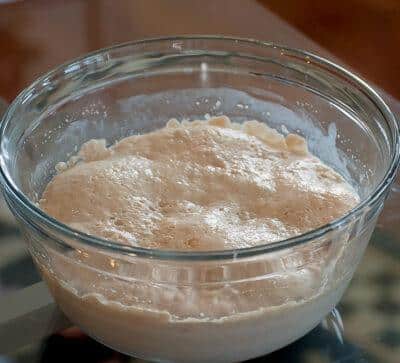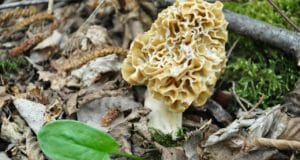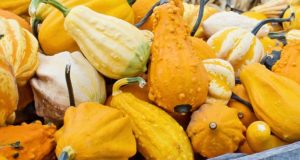|
Listen To The Article
|
Knowing and replacing the staples in the kitchen in some other way than a trip to the store is an important survival skill. One of those things is bread.We will see how to make your own yeast for the bread.

To make your own yeast, try different yeast procurement methods for new flavors and textures in your baking.
The first step to make bread is taking the time to learn to bake, which, unfortunately, is becoming a lost art in and of itself. The second step is to learn how to obtain the components of bread, such as flour, water and yeast.
If you are ready to go beyond the basic sourdough starter, try these yeast procurement methods for all new flavors and textures in your baking.
Feeding the Starter
Whether you are talking about a standard sourdough starter, or one of those listed below, you will see many recipes talking about “feeding” the starter. This means adding 1 cup flour and 1 cup water to the mix so that the yeast can keep growing. You will need to feed the starter daily if it is at room temperature, or weekly if it is in the fridge. If you don’t bake bread that day, you will also need to toss out one cup of the starter so that the ratios stay the same. This is an important step—and can be a great motivator to bake regularly so that none of your hard work goes to waste! Yeast starters are one thing you will not want to throw in the compost pile, as the bacteria can grow out of control and give you a very unpleasant result.
Grape Starter
Grapes, along with many other types of fruits (such as apples, oranges and grapefruits to name some examples), contain natural yeast spores in the skin or peel of the fruit.
For grapes, stem them (do not wash them, as this will wash off the yeast that you are trying to grow), crush by hand, and place in a container covered with cheesecloth. Leave undisturbed for three days. You should start to see the liquid bubble, indicating that the yeast is growing. Strain the liquid (which now contains the yeast), and stir in 1 cup of whole wheat flour.
Leave your grape starter at room temperature for 24 hours. Save only one cup of the mixture, then add another cup of flour and a cup of water. Do the same thing for another day or two. You should have a very bubbly starter at this point. After this, just keep feeding it so you will always have some ready for your next loaf of bread.
As you experiment with different fruits (and even tomatoes!) you will find that each kind of starter has a bit of a different flavor. Find which ones you like best. Just remember, you need to use homegrown or wild fruits, since the store-bought ones will be covered with pesticides, wax, and who knows what else—probably not much yeast left to be found there. And don’t wash it off before starting.
Potato Starter
It is amazing the things that we throw away that are more useful than we know. In this case, that water you boiled potatoes in for dinner is one of the fastest ways to make a starter for your bread. Simply take a cup and a half of the potato water, add a tablespoon of sugar, and stir in flour until stiff. Cover and leave overnight in a warm place. If it is nice and bubbly the next morning it is ready to use. If not—start over.
Alternatively, if you do not usually boil your potatoes, or just want to try something different, cheat a little.Use one packet of yeast (1 tablespoon), mix with a cup of water, a half-cup of sugar, and three tablespoons of instant potato flakes. Let it stand for 24 hours, then put it in the fridge. Feed every four days, but instead of the usual flour and water combo, use the same amounts of sugar, potato flakes, and water that you used to create the starter.
Drying Your Yeast for Storage
One practical challenge is to make your own yeast, store and transport it. We see this in one very practical example, when Israel left Egypt in a hurry during the Exodus, and did not have time for their bread to rise. Jews to this day commemorate God’s deliverance by abstaining from products with leavening during Passover.
If you want to be able to bake bread the instant you arrive at your bug-out location (if you ever need to take your own personal Exodus), then you will want to dry some yeast for use later
Take any of your starters, spread very thin on a cookie sheet or baking stone, then dehydrate as you would anything else. If you live in a hot and dry climate, you may just be able to cover it with a cheese cloth and place in the sun. Otherwise, put on the lowest temp in your oven and dry it that way. Once the yeast is dry (not cooked, if it cooks the active yeast will be killed and rendered useless), you can crumble it and store in an air tight container.In this way you can make your own yeast at home. Just like store-bought yeast, it will last longer in the fridge or freezer.
Make your own yeast and play with your recipes
Play around with amounts you use in recipes once your yeast is ready, as the potency of homemade yeast will be a little different than the store-bought version .You will probably need more of it for the same amount of bread (typically about a cup of starter in place of 1 packet of yeast, if using wet starter. If you’re using dry yeast, try just doubling the amount to start).Make your own yeast at home and feel the benefits of it.
What you lose in time, you may find you make up for in flavor and fun. Make your own yeast and there is nothing quite like the smell of fresh baked bread to make you feel at home.
Editor’s Note: This article is included in the newly released offering from Off the Grid News, The Big Book of Off the Grid Secrets. This is one reference book you will definitely want to keep handy! You can find this latest book at offthegridsecrets.com.
For additional reading, check out our Off The Grid News article, How To Make Butter In An Emergency!
© Off the Grid News
 Off The Grid News Better Ideas For Off The Grid Living
Off The Grid News Better Ideas For Off The Grid Living




